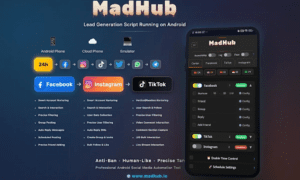In the realm of modern business and technology, data is king. The ability to collect, store, and analyze vast amounts of data has become a critical component of success for organizations across industries. At the heart of this data-centric paradigm lies the data center, a centralized hub where all digital operations converge. However, merely having a data center is not enough. Ensuring its seamless operation and optimal performance is where data center monitoring plays a pivotal role.
Understanding Data Center Monitoring
Data center monitoring involves the ongoing observation and assessment of multiple factors within a data center setting. It encompasses the surveillance of server performance, network connections, power usage, cooling infrastructure, and the overall security of the facility. The fundamental objective of data center monitoring is to identify and resolve potential issues in real time, thereby reducing downtime, maximizing resource efficiency, and upholding the integrity of data. Additionally, you can find a guide to data center monitoring online and learn more about it, By continuously monitoring these critical parameters, organizations can preemptively address challenges, enhance operational efficiency, and maintain a robust IT infrastructure that supports their business objectives effectively.
The Importance of Data Center Monitoring
Minimizing Downtime: Downtime can be catastrophic for businesses, leading to revenue loss, reputation damage, and customer dissatisfaction. Data center monitoring allows for real-time detection of anomalies or potential failures, enabling swift remediation actions before they escalate into major outages.
Optimizing Performance: By closely monitoring key performance metrics such as server CPU usage, network bandwidth, and storage capacity, organizations can identify performance bottlenecks and optimize resource allocation. This proactive approach enhances overall system performance and user experience.
Ensuring Data Security: Data breaches and cyberattacks are constant threats in today’s digital landscape. Data center monitoring helps detect unauthorized access attempts, unusual network traffic patterns, and other security breaches, bolstering data security measures and safeguarding sensitive information.
Predictive Maintenance: Leveraging advanced monitoring technologies such as predictive analytics and machine learning, organizations can predict equipment failures or maintenance needs based on historical data and usage patterns. This predictive maintenance approach reduces downtime, extends equipment lifespan, and lowers maintenance costs.
Compliance and Reporting: Many industries have stringent regulatory requirements regarding data handling, storage, and security. Data center monitoring provides comprehensive data logs, reports, and audit trails, facilitating compliance with regulatory standards and demonstrating adherence to best practices.
Key Components of Data Center Monitoring
Infrastructure Monitoring: This involves monitoring hardware components such as servers, storage devices, network switches, and power distribution units (PDUs) to ensure they are functioning optimally and within specified parameters.
Environmental Monitoring: Monitoring environmental factors like temperature, humidity, and airflow is crucial for maintaining optimal conditions within the data center. Fluctuations in these parameters can impact equipment performance and reliability.
Security Monitoring: Data center security encompasses physical security (access control, surveillance cameras) as well as cybersecurity (intrusion detection, firewall logs, antivirus scans). Continuous monitoring helps detect and respond to security threats promptly.
Performance Monitoring: Monitoring performance metrics such as CPU utilization, memory usage, disk I/O, and network traffic provides insights into system health and performance trends, allowing for proactive optimization and troubleshooting.
Alerting and Notification: Automated alerting mechanisms notify IT personnel or administrators when predefined thresholds are exceeded or critical events occur. This real-time notification ensures prompt action and problem resolution.
Evolving Trends in Data Center Monitoring
IoT Integration: The Internet of Things (IoT) is revolutionizing data center monitoring by enabling the integration of sensors and smart devices to collect real-time data on equipment performance, energy consumption, and environmental conditions.
AI and Machine Learning: AI-driven analytics and machine learning algorithms enhance data center monitoring capabilities by identifying patterns, predicting potential issues, and optimizing resource allocation based on dynamic workload demands.
Edge Computing Monitoring: With the rise of edge computing, where data processing occurs closer to the source of data generation, monitoring edge infrastructure becomes critical for ensuring low latency, high availability, and seamless connectivity.
Hybrid and Multi-Cloud Monitoring: As organizations adopt hybrid and multi-cloud environments, comprehensive monitoring solutions that span across on-premises data centers and cloud platforms are essential for holistic visibility and management.
Best Practices for Effective Data Center Monitoring
Define Monitoring Objectives: Clearly define the key performance indicators (KPIs) and monitoring objectives based on business goals, IT infrastructure requirements, and industry standards.
Utilize Monitoring Tools: Invest in robust monitoring tools and platforms that offer real-time visibility, customizable dashboards, automated alerts, and scalability to meet evolving business needs.
Implement Redundancy: Ensure redundancy in monitoring systems to mitigate the risk of monitoring failures. Backup power supplies, redundant network connections, and failover mechanisms can prevent monitoring gaps.
Regular Audits and Updates: Conduct regular audits of monitoring configurations, update monitoring software and firmware, and review monitoring policies to align with changing business dynamics and technology advancements.
Training and Skills Development: Provide training to IT staff on data center monitoring best practices, tools, and technologies. Foster a culture of continuous learning and skills development to maximize the effectiveness of monitoring efforts.
Data center monitoring is not just a reactive measure to address issues; it is a proactive strategy essential for maintaining the integrity, performance, and security of IT infrastructure. As businesses embrace digital transformation and rely increasingly on data-driven operations, the role of data center monitoring as the backbone of IT infrastructure becomes more pronounced. By embracing evolving technologies, best practices, and a proactive mindset, organizations can harness the full potential of data center monitoring to drive efficiency, innovation, and business resilience in today’s dynamic digital landscape.




































